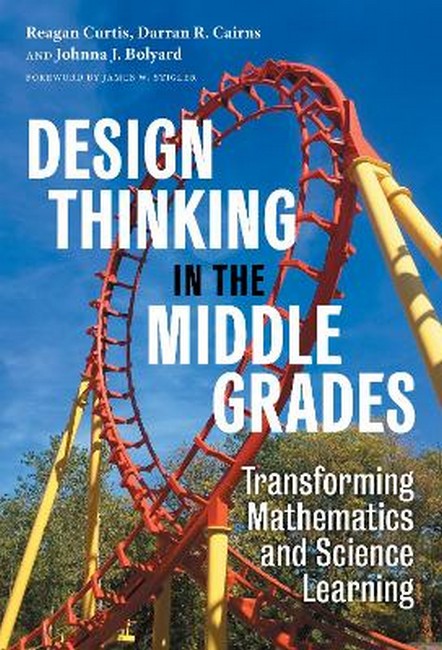Reagan Curtis is a Chester E. and Helen B. Derrick Endowed Professor of educational psychology in the School of Education and founding director of the Program Evaluation and Research Center at West Virginia University. Darran R. Cairns is faculty in the School of Science and Engineering at the University of Missouri-Kansas City. Johnna J. Bolyard is an associate professor of mathematics education in the School of Education at West Virginia University.
Request Academic Copy
Please copy the ISBN for submitting review copy form
Description
Contents Foreword James W. Stigler?xi Acknowledgments?xiii Introduction?1 Part I: Understanding the Approach 1.?Thinking Differently About Teaching and Learning?9 What It Looks Like in a Real Classroom?9 Why This Book??12 2.?Engineering Design, Mathematics, Science, and Literacy?17 A Visual Model of Our Approach?18 The Design Process: Dynamic, Iterative Waves of Divergent and Convergent Thinking?19 Integrating Mathematical Modeling, Scientific Challenges, and Literacy Practices?24 3.?Affordances and Supports?29 Supporting Productive Struggle by Learners?30 Promoting Equity in the Classroom?32 Complex Instruction?33 Reflective Teaching Practice?36 Leveraging the Design Process for Reflective Teaching?38 4. Why Do We Think This Works??41 Evidence-Based Teaching Practices?41 Evidence Base for Core Components of Our Approach?46 Evidence Base for Bringing It All Together?49 5.?Personifying Best Practices?53 (Re)Designing Industrial Farming in Your State?53 Connecting Theory to Practice?55 Part II: Making It Real 6.?Design and Mathematical Modeling-From Artifacts to Processes?63 Affordances for Systems-Level Learning Across the Artifact-to-Process Continuum?65 Returning to the Grocery Store?70 7.?How Constraints and Criteria Affect Design and Mathematical Modeling?73 How Many Marbles Can You Fit in a Piece of Aluminum Foil Before It Sinks??74 Keeping a Cold Drink Cold for Longer (Co-Constructing Constraints)?74 8.?Scaffolding Student Learning in Design and Mathematical Modeling?79 Productive Struggle in Design-Based Learning?80 Scaffolding Productive Struggle?82 Strategically Using Formative Assessment Data?85 Giving Students Voice in Design Constraints, Criteria, and Methods of Assessment?87 9.?Design and Mathematical Modeling Across Content Areas and Grade Levels?91 Gingerbread-House Lesson (6th-Grade Mathematics Class)?91 Predator/Prey Lesson (8th-Grade Science Class)?95 Skater-Ramp Lesson (7th-Grade Mathematics and Science Class)?98 Adapting Design-Based Learning Activities to Your Students?101 10.?Design and Mathematical Modeling Across Instructional Modalities?105 Taking Design-Based Learning Online?106 Examples of Design-Based Learning at a Distance?108 Connecting Examples to Core Components, Affordances, and Supports?111 Part III: Making It Your Own 11.?Linking an Integrative Series of Design and Mathematical Modeling Activities?115 Problem-Based, Design-Based, and Project-Based Integration?115 Energy and the Environment Thematic Unit?117 Pulling It All Together?122 12.?Address Any Content Standard and OFixO Textbook Problems?123 Starting From Standards?123 Starting From Existing Activities or Problems?127 (Re)Designing Effective Teaching Practices?131 Conclusion: The Wicked Problem of Education for All?133 References?135 Index?143 About the Authors?147

